'Hazeldene'
Balwyn Road, Canterbury
B 1909 George Fincham & Son for Sir Aaron Danks.
2m, 17 sp st, 5 c, tub pn. Gt: 16.8.8.8.4.4. Sw: 8.8.8.8.8.4.2.8.8. Ped: 16.16.
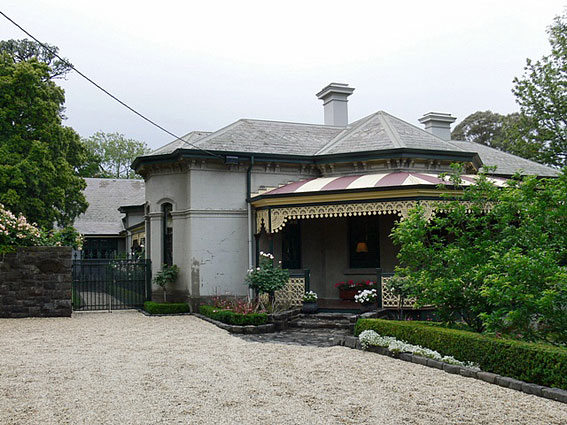
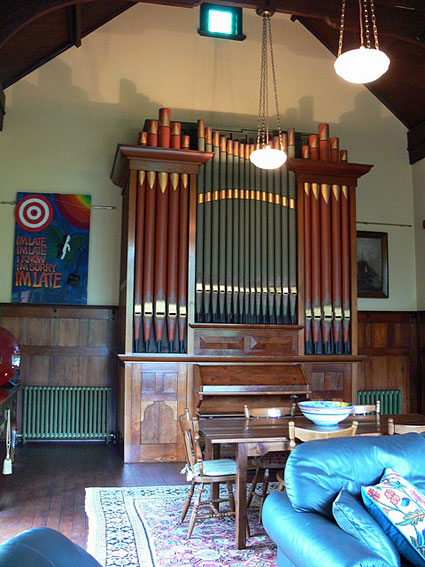
Aaron Danks was born in Ross, Tasmania in 1861 and died at Canterbury, Victoria in 1928. He was a noted Melbourne businessman and philanthropist and was prominent in the Methodist Church; he was knighted in 1925. He was the son of English-born John Danks (1828-1902); he became a partner in the Danks hardware business and established a brass foundry in England.
Danks bought ‘Hazeldene’ in 1904. The house had been built in 1889 for George Granville Mercy, later a Mayor of Camberwell 1906-07, on an allotment from the estate of ‘Shrublands’ mansion, further up the hill. Danks enlarged the home to 11 rooms and commissioned architect J. Edmund Burke to design the splendid arts and crafts music room that dominates the eastern end of the house.
The firm of George Fincham & Son was commissioned to build a two-manual organ of 17 speaking stops for the music room in 1909. The instrument was built at the time when the Fincham firm had Herbert M. Palmer (c.1871-1930s?) on its staff, who had come from Hill & Son, London. The instrument was opened on 14 September 1909 by W.F.G. Steele, Organist of The Scot’s Church, Melbourne. In 1924 the original Clarinet was replaced by a Flauto Traverso and at some stage the original hydraulic blowing was changed to electric.
The layout of the instrument is unusual. It is placed against the southern wall of the music room and occupies relatively little floor space. The Swell Organ is placed at the top of the case while the Great Organ is placed at floor level. In a cellar beneath are the reservoirs and Vox Humana, which occupies its own diminutive swell box linked to the main swell pedal.
The tonal design is also unusual, particularly as the focus is upon delicate orchestral effects. Thus there are two ranks of undulating ranks on the Swell Organ: a Viol d’Orchestre and Voix Celeste and an Echo Dulciana and Vox Angelica, the latter two voiced pianissimo. The pipework remains cone tuned.
The woodwork of the organ case has been executed in very fine fiddleback Tasmanian blackwood, while the zinc façade pipes have been very delicately coloured to accord with the original decoration of the room (which may be observed inside the organ). The console has ivory stopkeys based upon Hope Jones’ patterns; Finchams would have been familiar with these from the Ingram rebuild of the Melbourne Town Hall organ shortly earlier.
The instrument is of great significance as it is the only substantial residence organ in the country to remain in its original location. Sadly, however, it needs considerable restoration work as the original leather work has seriously perished and it is currently unplayable. I can recall hearing it in the late 1960s and early 1970s and recall that the overall sound was very soft indeed.
GREAT |
16 8 8 8 4 8 8 8 8 8 8 4 2 8 8 16 16 |
A (changed to Flauto Traverso 1924) TC TC (rocking tablet in Swell keycheek) (rocking tablet in Great keycheek) A A at ½ wind |
Compass: 61/30
Tubular-pneumatic action
Attached stopkey console
3 thumb pistons to Great
4 thumb pistons to Swell
Balanced swell pedal
Crescendo pedal
Wind pressure: 2½ inches
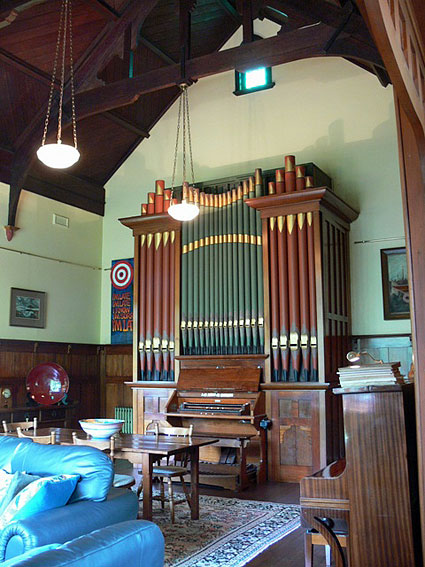
|
||
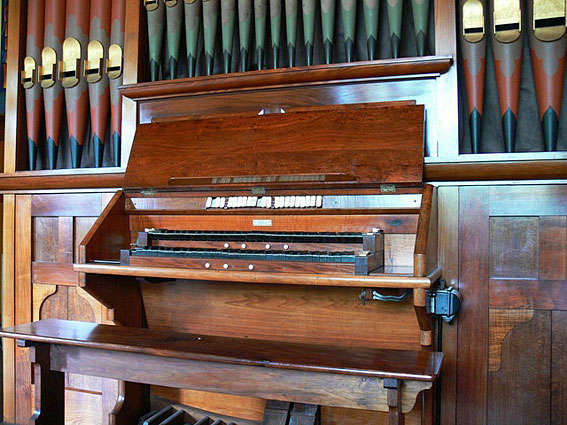
|
||
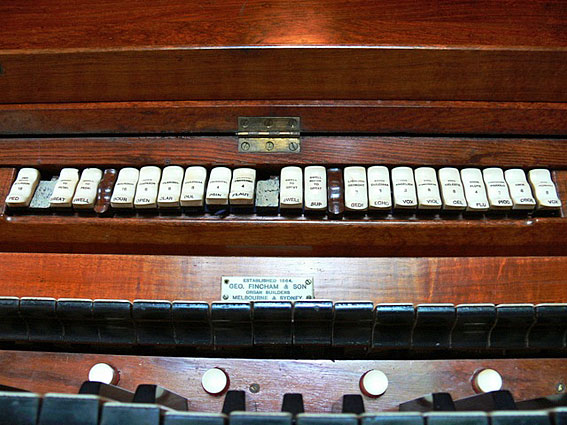
|
||
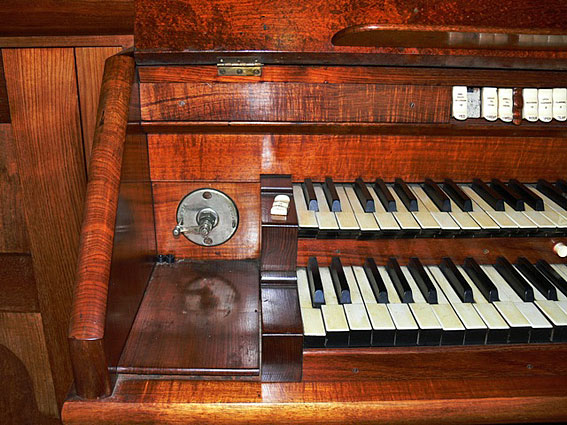
|
||
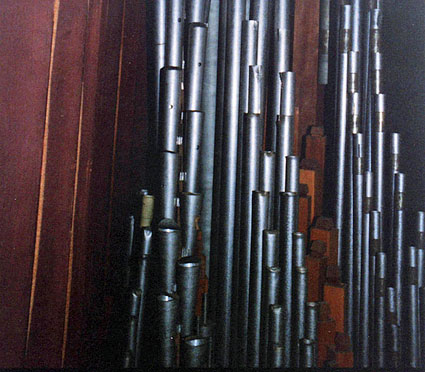 |
 |
|
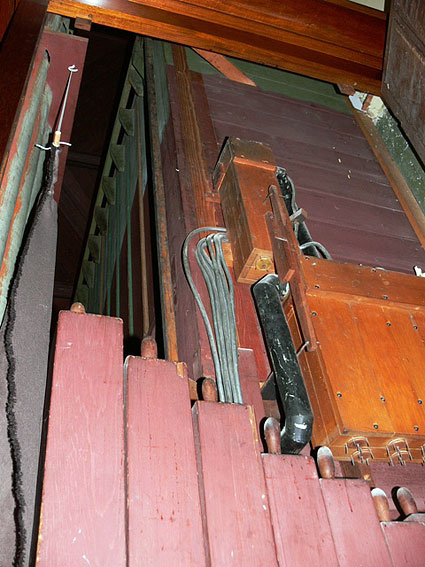
|
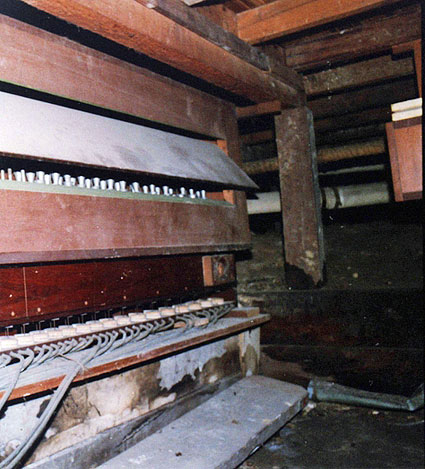 |
|
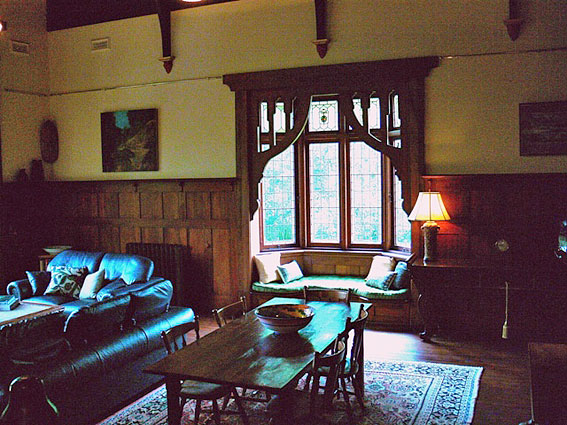
|
||
Photos: JRM (Dec 2008)
John Maidment
9 December 2008